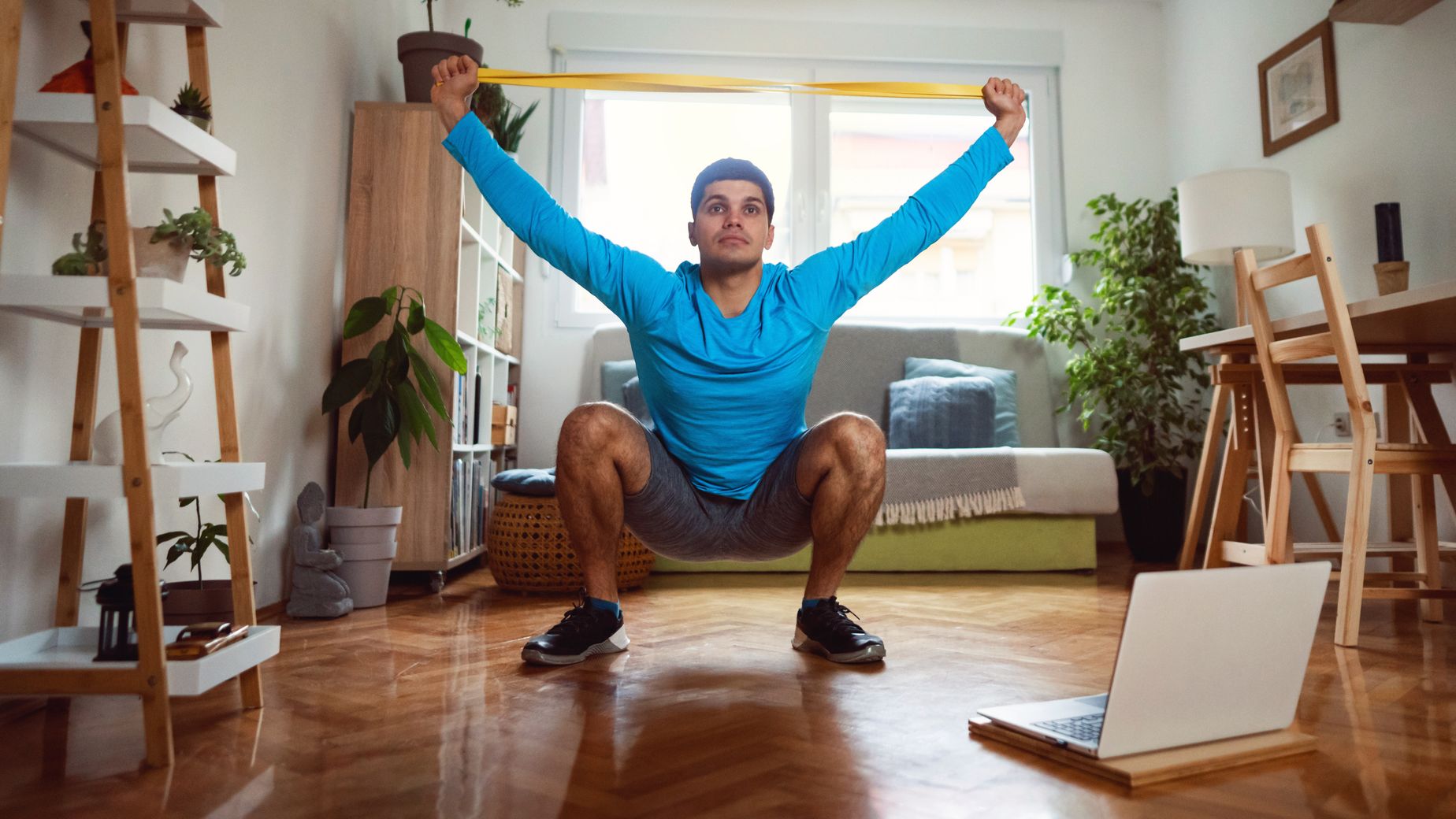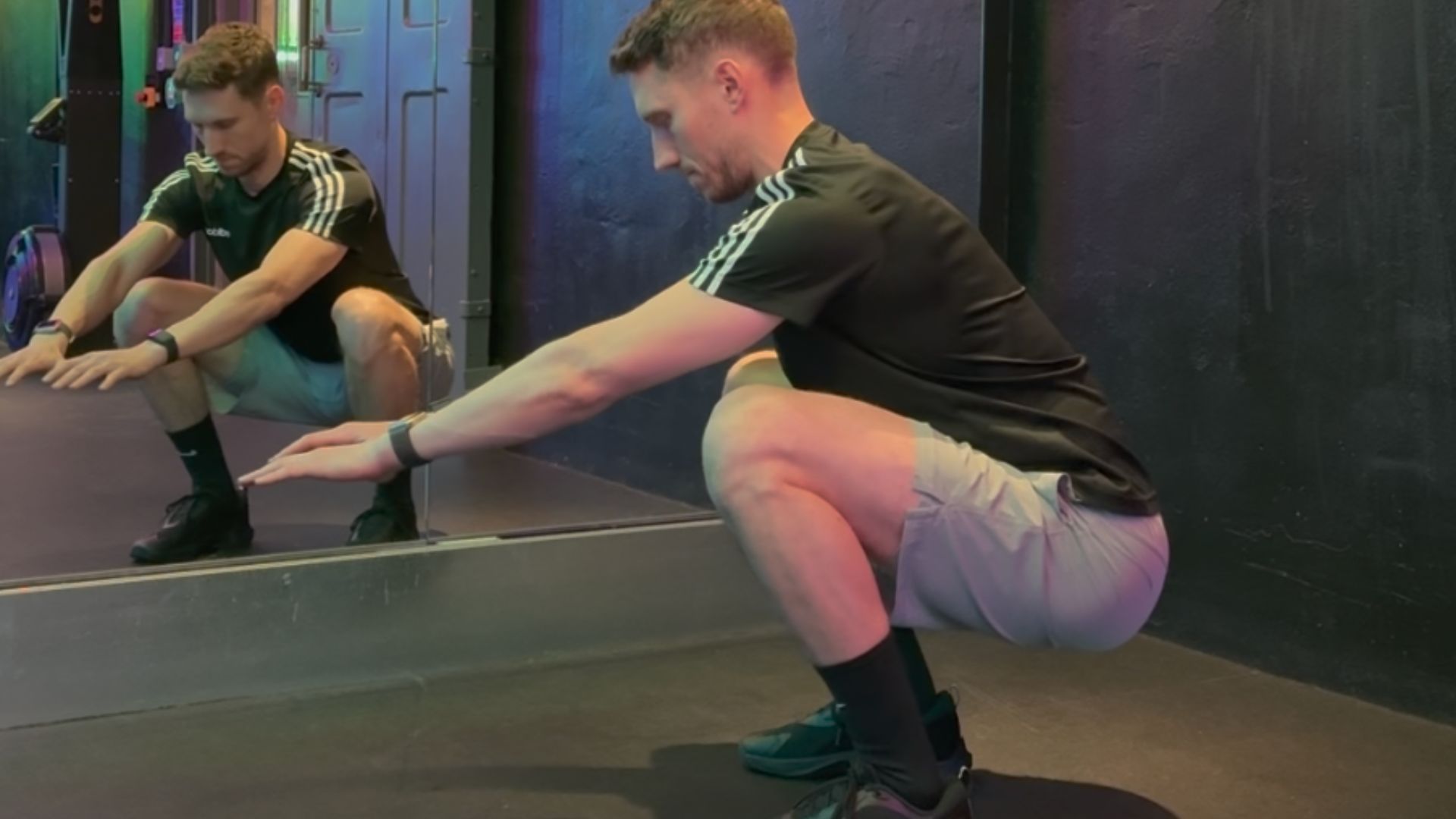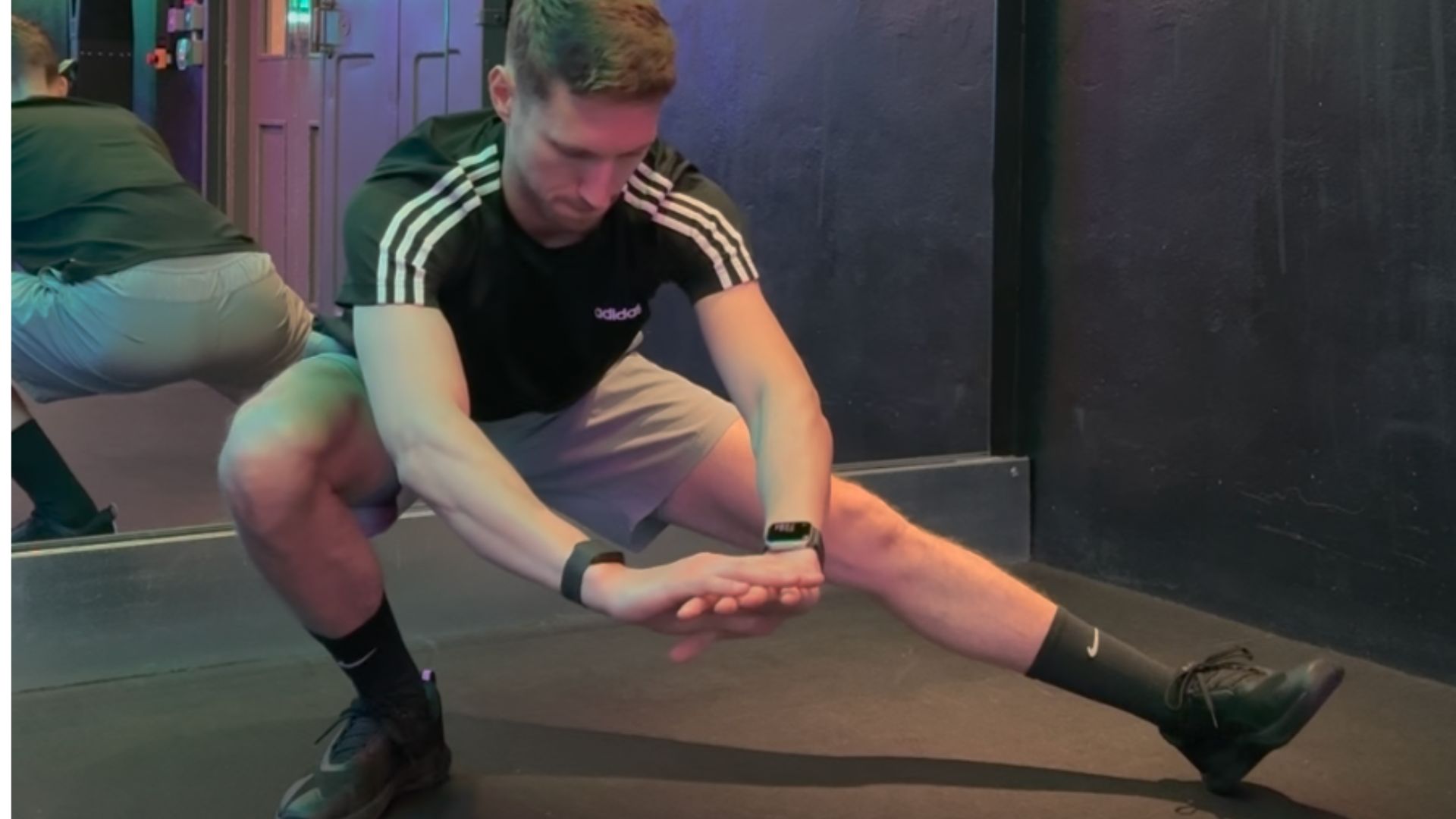
It’s undeniable: mobility training is having a bit of a moment and good thing too.
A 2024 study of over 3,000 people aged between 46 and 65 suggests the more flexible we are in middle age, the lower our mortality risk.
Whether you’re within that age bracket or way off it, it’s never too soon to start. But with Instagram, YouTube and TikTok awash with fitness gurus promising quick fixes, it can be hard to know where to start.
One prominent voice worth listening to is Roger Frampton. Author of Stretch and The Flexible Body, his viral 2017 TEDx Talk Why Sitting Down Destroys You has been viewed almost five million times.
He’s also the founder of The Frampton Method, hosting in-person workshops and monthly online mobility challenges to help people “rediscover the joy of mobility.”
Personally, mobility is something I’ve been putting off for longer than I care to admit. Despite being aware that improving it would unlock a greater range of motion.
This, in turn, would allow me to recruit more muscle fibers, resulting in greater strength and power, along with reduced risk of injury. Yet I spend the majority of my workouts attempting to lift heavy and run fast.
Start your week with achievable workout ideas, health tips and wellbeing advice in your inbox.
To reset the balance, I enrolled on Frampton's month-long stretch challenge with the intention to spend 10 minutes a day mobilizing my body.
The mobility challenge
Hosted via his online hub (£17.99 a month or a discounted $19.78 for US customers) it consists of a series of daily videos that can be followed on your laptop or mobile device.
My personalized month-long plan includes both home and gym-friendly routines, covering balance techniques, hip and groin flexibility, ankle and leg mobility, squat shapes and—a personal favorite—Frampton's all-time top 10.
I also asked Frampton to add some knee-focused routines, given I’ve had two ACL reconstructions in the past.
After a month of trial and regular error—in which I pulled my back chasing strength gains and a fast 5K time—I learned some valuable lessons about lifting less and mobilizing more.
What I learned
1. Like brushing your teeth, stretching should form a daily habit
The first thing I realized in undertaking Frampton’s 30-day challenge is that improving mobility takes time. There is no quick fix. Like anything, consistency is key.
For me, this began with a fairly entry-level sit-to-stand tutorial: using a chair and yoga blocks to gradually go from standing to sitting cross-legged on the floor and back to standing.
The next routine involved a series of more challenging thread-the-needle stretches that I found especially therapeutic for my mid-back after hunching over my desk all day.
Later videos had me easing into a deep bodyweight squat to build strength through my hips, then balancing on one foot to develop mobility and resilience through my ankle and hips.

Sam works on his mobility with a deep squat
Truth be told, the routines felt rather scattergun, rather than addressing a particular need like a tight lower back or immobile shoulders. But Frampton's intention is to make mobility training a habit.
“I always compare it with brushing your teeth,” he tells me. “We have a daily habit for our teeth, but we don't have a daily habit for the joints in our body.”
Frampton wants users to approach mobility like they would learning a language or brain training: little and often. “It’s like Duolingo or Wordle. Every day you log on and train some part of your body, whether that’s balance, hips, shoulders or whatever,” he says.
The trick is to make it convenient. “It’s different from fitness,” Frampton continues.
“Usually people go to the gym and train for an hour or a huge amount of time. I’m just trying to get people used to doing bite-sized drills so it just feels weird if you haven't done them.”
2. 10 key stretches underpin full-body mobility
One video I keep coming back to is Frampton’s desert island stretches. These are 10 exercises he swears by and has relied on since he first set foot in a gym.
It includes a 90˚ flat-back fold, one-leg balance with eyes closed, full-resting squat, cossack squat and dead hang (from a bar if in the gym or from a door frame or bannister if at home)—and these beginner mobility exercises quickly become a staple of my daily routine.
A post shared by Fit&Well (@wearefitandwell)
A photo posted by on
As the month progresses, I find I prefer to sprinkle some of these exercises throughout my day, such as while waiting for the kettle to boil for my morning brew, rather than always following the videos verbatim.
That’s partly because Frampton's routines can be a tad tedious, without the high-octane audiovisual treatment I’ve become accustomed to with online fitness content.
It’s also partly because halfway through the challenge, I manage to tweak my back.
3. Injuries are inevitable—but spot-fixing them with stretching rarely helps
The injury isn’t, thankfully, due to one of Frampton’s mobility drills but because I bit off more than I could chew, doubling up on a run and dumbbell workout.
It’s a timely reminder as I near my 38th birthday that lifting heavy and running fast is a fool’s gold if my back is always liable to crumble from overexertion.
Simply doing more lower back stretches isn’t the answer. “Chasing after pain and tweaks isn’t something I focus on,” says Frampton. “Real progress comes from improving overall mobility.”
Instead, he encourages me to look East for inspiration. “I talk about China all the time. Walk through a park in Shanghai or Beijing and you’ll see 80 or 90-year-olds moving better than teenagers in the UK,” he says.
“It's because their whole purpose is different. All of this functional stuff is just a part of their lives.” In other words: make stretching a daily habit now and my 80 or 90-year-old self will thank me later.
Taking this on board, I continued to pick and choose routines from Frampton's extensive library that didn’t aggravate my sore lower back, and was able to track my progress against other users on the challenge for added accountability.
4. You can build strength and mobility simultaneously
I assumed strength training might have to take a back seat during this challenge, but having seen the way Frampton works—and learning about his journey from model to mobility guru—I realized the two aren’t mutually exclusive.
“When I first started out, I was really stiff and immobile from too much resistance training and not enough mobility work,’ he says. “My starting point was a tight person who didn't have any flexibility.”
Over time, through consistent daily repetition, he’s now comfortably able to touch his toes, sit in a deep squat and execute the kind of effortless front splits that a ballet dancer would be proud of.
He also has a formidable grip strength from all that hanging from a bar and, judging by his muscular physique, would give a gymnast a run for their money on the parallel bars.
“For me it always starts with purpose,” says Frampton. “That’s not the purpose of weight loss or trying to look better. I want to be able to move like I move now when I’m 80 years old. I want my joints, all of my joints, to move in my body as they should, as they evolved to move.”
That, in a nutshell, is why Frampton prioritizes mobility over flexibility and range of motion over muscle. “That’s how I would define mobility training. It’s not just flexibility. I’m not just trying to stretch. I want to be strong in all these positions. That's a huge difference.”
For me, that meant lifting slightly lighter than I was used to, but ensuring full range of motion at all times: deep squats, full extensions and controlled eccentric movements.
5. Stretching should form the main course of your workout, not just dessert
Often an afterthought, Frampton wants people to reframe how they think about stretching and mobility training.
“People always ask me, should I tag this on to my workout?”, he says. “More often than not, people in the gym spend 90% of their time working on what they look like and 10% on what really matters. So I’m always trying to get people just to question that.”
You can tag mobility training onto your workout, he says, but then it will always be something that’s just tagged on. “Then it stops being the main course.”
Instead, Frampton tends to allocate time every evening for mobility. “It will all be centred around how I’m moving and how my body functions. For me that will always be number one.”
That’s not to say strength training is off the menu. Rather, Frampton emphasizes that functional exercises like squats, push-ups and pull-ups should be practiced through their full range. In other words, how you lift is more important than how much you lift.

Sam in a cossack squat position
What if you’re completely new to stretching? “Think shapes not exercises,” he says. “Primitive stuff, the kinds of shapes toddlers do without even thinking. They’ll play on the ground in all these shapes that they’ve taught themselves, like we all did, and it’s beautiful.”
The problem is we forget. “Nobody is an absolute beginner. We all taught ourselves how to move. So, can you sit in a squat? Can you touch your toes? Can you sit on the ground cross-legged? Can you kneel? Can you balance on one leg?” says Frampton.
“Learning to master these shapes is really powerful. It's the kind of thing you'll really appreciate when you’re older.”

Sam Rider is an experienced freelance journalist, specialising in health, fitness and wellness. He is also a REPS level 3 qualified personal trainer.
You must confirm your public display name before commenting
Please logout and then login again, you will then be prompted to enter your display name.
